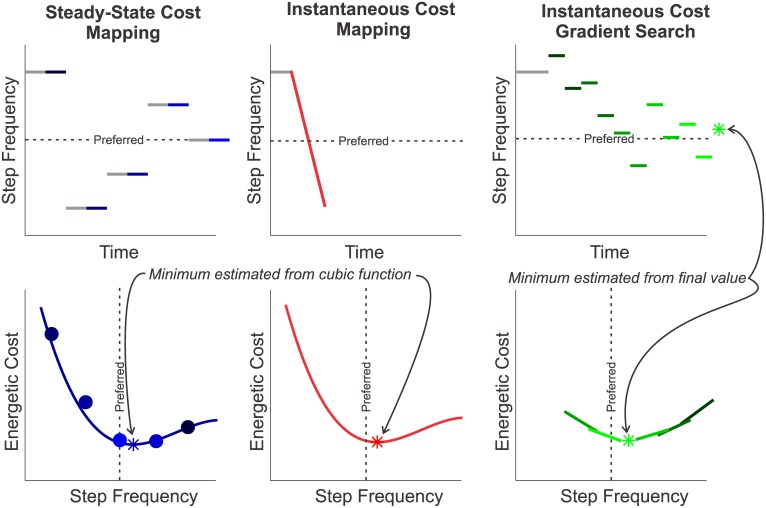Fig 2. Overview of Methods.
Steady-State Cost Mapping uses a cubic polynomial fit to averages of steady-state metabolic measurements taken in random order at discrete step frequencies between -25% and 25% of the subject’s preferred step frequency. Instantaneous Cost Mapping uses data collected from continuously changing the commanded step frequency over the same range. The predicted minimum of this method is obtained from a cubic polynomial response surface fit that best predicts the respiratory measurements. The Instantaneous Cost Gradient Search uses an estimate of the slope of the energy-parameter surface to update the guess of the optimal parameter setting. The slope estimate comes from measurements taken at discrete step frequencies a small distance away from the current guess. The predicted minimum is the final iteration value. (Gray lines indicate data that are not used in the identification.)

